Heating a cottage: diagrams and nuances of organizing an autonomous heating system
The construction of an autonomous heat supply system is a technically and technologically complex process, the implementation of which must be approached with all responsibility. In order to arrange a flawlessly functioning circuit, many factors must be taken into account. In this case, it is necessary to comply with building regulations and requirements.
We will tell you how, in what order and according to what rules the heating of the cottage should be organized. The article we presented describes the steps of system design and project implementation. Recommendations are given for carrying out calculations, selecting equipment, and putting the system into operation.
The content of the article:
Heating system requirements
Regardless of whether an old system is being modernized or it is being designed from scratch in a newly built house, the first thing to start with is becoming familiar with the regulatory documentation. It describes in detail how the equipment is put into operation and describes the subtleties and features of its further use.
After spending some time on this, you can be sure that the heating system will last for many years. From year to year, the requirements are adjusted and updated. But there are some principles that every cottage owner should know.The first thing that needs to be ensured when installing a heating system is explosion and fire safety.

The list of rules that will help make a private home not only cozy, but also safe to live in, should include the following aspects:
- The temperature of open heating system elements should not be higher than that recommended by the manufacturer.
- Equipment and all appliances should be properly insulated. This will avoid burns, eliminate the formation of moisture and reduce heat loss. In addition, hot elements can ignite dust, gas or aerosol in the room.
- When using a coolant, the temperature of the latter must be 20 degrees Celsius lower than its evaporation or self-ignition temperature. For example, if the system uses water, then it must be prevented from boiling. An excellent solution would be to raise the pressure.
There are also operational requirements for the heating system. After all, any equipment must be as strong, durable, easy to operate, silent and easy to repair as possible.
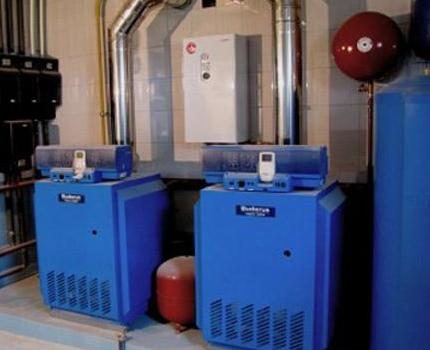
By choosing a boiler, radiators and pipes that best meet the listed criteria, you can save yourself from many problems.
Main stages of installation
When you plan to install a heating system in a completely new house, the best solution would be to think through all the nuances at the design stage.
Preparation for drafting
A well-designed diagram and calculations carried out by a specialist will allow you to solve many problems “in the bud.” For example, this approach will allow you to find out whether it is necessary to allocate a separate room for the boiler room.
Before starting finishing work, it is recommended to take care of where and how the pipes will be hidden. The best way out is heating system installation before screeding the floor.
Experts recommend starting to design and select equipment only after the thermal circuit of the house has been closed. That is, this needs to be done after the doors, windows have been installed and the roof has been covered.
To simplify the process of installing a cottage heating system as much as possible, the work is divided into several main stages:
- choosing the type of heating system;
- design and calculation work;
- ordering equipment;
- arrangement of a boiler room;
- installation of radiators;
- carrying out commissioning works.
Each of the steps listed above has its own characteristics. Knowing all the intricacies in this area, any beginner can cope with installation at the highest level, and the equipment will confidently last for many years.
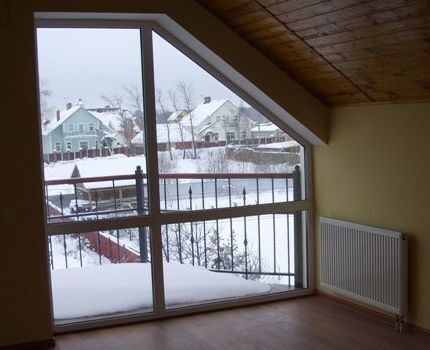
Selecting the coolant type
Manufacturers offer a wide range of heating equipment. On the one hand, this allows you to choose everything you need to implement the most complex and uncomplicated system.
But with such a large model range, any unprepared buyer will undoubtedly have a lot of problems. Therefore, before going to the store, you should understand this issue in as much detail as possible.
There are several types of heating systems. So, depending on the coolant, it happens:
Airborne equipment, as the name suggests, uses air to transfer heat. It is taken from outside the building, heated and delivered directly to the desired area. The main advantage of such a system is its security.
Its disadvantages are low heat transfer, high cost, and to carry out installation, you will have to go deep into technical literature.
The easiest heating system to operate is water. As coolant This equipment uses water, antifreeze or a mixture of them in a certain proportion. But you have to pay for simplicity (literally). After all, in order for the liquid to move, you will need to install a pipeline, install radiators and a unit for heating it.
Steam plays a major role in the installation of steam heating, but it will be necessary to build steam pipelines and install pipes for collecting condensate. And when using a heating stove, hot gases transfer heat into the room through its walls, passing through channels.

One of the options - electric heating, i.e. system without coolant. To obtain heat you need electricity, and it is transmitted through a solid medium.Autonomous infrared or oil batteries, electric convectors, electric fireplaces or special fans are used.
But you have to pay for simplicity (literally). After all, such equipment uses a large amount of electricity. And its performance is quite low, which makes it a profitable solution only for rare use in small country houses.
How many circuits should I equip?
Main difference double-circuit boiler is that it heats water both for heating the room and for the hot water system. On the one hand, this is beneficial, since the purchase and maintenance of such equipment will be cheaper than the purchase of single-circuit devices and a separate arrangement of a hot water supply system.
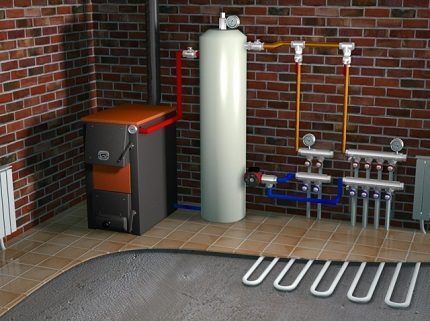
And also with a double-circuit boiler, you still have to choose the type of heater between flow-through and storage. Considering that the first option is convenient for a family of 2-3 people, and the second will save fuel, but will require space for an additional tank to store hot water.
As for the single-circuit system, today this is the best solution for many cottages. It assembles faster and requires fewer components.
Boiler fuel type
Boilers for heating systems are divided into categories depending on the type of energy source they use. There are gas, solid fuel and liquid fuel equipment, as well as devices that run on electricity.Before making your final choice, it is recommended to evaluate which type will be most beneficial.
It is also worth paying attention to whether there is a network gas pipeline near the house, how accessible solid and liquid fuels are in the region, and whether there are problems with the stability of the electricity supply.
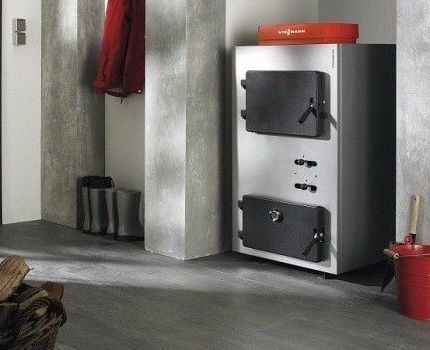
The most profitable solution would be to install a gas-fired boiler. But its installation will require some financial investment and time. After all, you will have to obtain the appropriate permission. There will also be a problem in allocating space for storing fuel reserves if there is install a gas tank or instead of network gas, a liquefied analogue in cylinders will be used.
Design and calculation work
Once the issue related to the type of heating system has been resolved, you can begin to develop the project. If the cottage has fairly modest dimensions, then you will be able to do all the calculations and draw up a diagram yourself.
But the best solution would be to entrust this work to an experienced heating engineer. A professional will make all the calculations correctly, which will avoid many problems that may arise during the installation stage.
During development heating system project The document should indicate:
- radiator installation location;
- a method for eliminating combustion products, if any;
- the place where the boiler will be installed;
- a detailed pipeline layout plan, which precisely indicates the location of fittings, taps and other elements.
It is recommended to order design and calculation work only from trusted companies that have permission to provide this type of service. This is often done by organizations that work in the field of installing heating systems or selling the equipment needed for this.
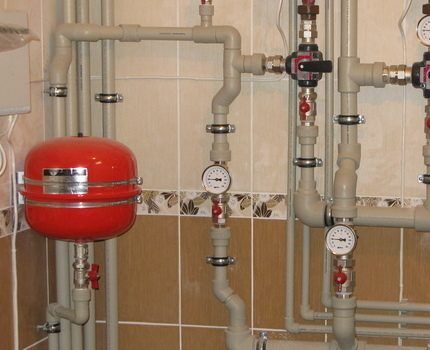
All calculations can be done independently. To do this, you need to understand the drawings, diagrams and detailed descriptions in the reference literature. You will need to take a closer look at information about the characteristics of the heat generator, the type of wiring, the general network configuration, the location and specifications of the equipment, and so on.
Purchasing the necessary equipment
When the type of boiler has been chosen, you should decide on its power, taking into account that the productivity of the equipment for a double-circuit system should be greater, since in this case the heat losses will be much higher.
Right calculated boiler power means that the temperature in the combustion chamber will not exceed 90 degrees Celsius. By following this rule, the equipment will last much longer. For example, for a cottage with an area of 100 m2, the best solution would be equipment with a power of up to 15 kW.
The next thing you need to install a heating system is heat transfer devices. To get it right calculate radiators, you need to decide on the number of these elements and the number of sections. Their characteristics depend entirely on the size of the living rooms.As for the material, experts recommend choosing cast iron products or bimetallic models.
The last detail to pay attention to in the shop is the pipes. Preferably polypropylene products. They are distinguished by ease of soldering and low weight, which allows you to do the installation yourself, without the involvement of specialists.
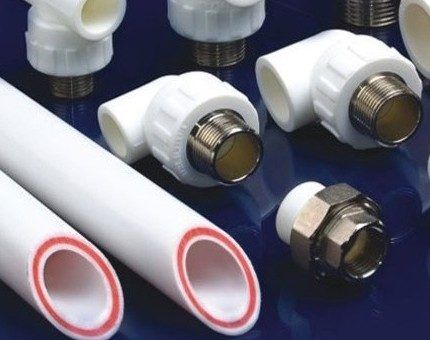
Installation of a boiler room in the house
Once all the necessary equipment has been ordered and delivered to the site, you can begin installing the heating system. When installing, it is important to strictly follow the project documentation, which will avoid problems and unplanned financial expenses.
The heating device is installed as specified in the manufacturer's manual.
In the absence of manufacturer's instructions, the following basic rules should be followed:
- there must be at least 1 m of free space in front of the boiler, and about 70 cm in the back and sides;
- The device must not be installed closer than 70 cm in relation to other devices;
- If two or more boilers are installed, a distance of about 2 m should be left between them.
If wall-mounted equipment was ordered, then more lenient requirements are imposed on it. For this type of heating boiler, you only need to leave enough space for easy access to the device.

Chimney and combustion products outlet
The next stage of installation of a cottage heating system is the organization of the chimney. With an improperly designed chimney, there is a risk of a fire in the house or a chance of carbon monoxide poisoning for residents.
It is recommended to build a structure for the removal of combustion products from metal, brick or ceramics. Ceramic chimney is the optimal solution in most cases.
Ceramics harmoniously combine low heat transfer and modular design. The only drawback of such a chimney is its high cost. In addition, the structure must have a strictly vertical configuration.
As for metal products, they will be an ideal solution for liquid and gas equipment models. After all, such chimneys are resistant to mechanical and chemical influences. The list of advantages should also include ease of installation (the design is assembled from modules).

Brick chimneys are most often used with solid fuel boilers. Their main advantage is low heat transfer, but construction should only be carried out by a qualified specialist.
When designing a chimney, it is important to adhere to the following rules:
- A canopy must be placed at the end of the structure. This element will provide protection from moisture and foreign objects;
- the shape of the chimney should be round. In this case, fuel combustion products accumulate less;
- the number of chimney turns cannot exceed three;
- the structure is installed half a meter above the flat roof, and for the ridge this parameter is 0.5-1.5 m.
If a decision has been made to install an external chimney, then a certain standard must be adhered to. Experts recommend placing such a structure upward at a distance of at least half a meter from the roof surface.
Installing radiators in the house
Installation of radiators requires compliance with certain rules. First of all, they should be installed exactly horizontally, without any distortions. If a single-pipe heating system is being assembled, then it is advisable to place the radiators at the same level.
To minimize heat loss, the elements need to be fastened at a distance of 8-12 cm from the floor and window sill, as well as 3-5 cm from the wall. In addition, the size of the radiator must be at least 3/4 of the window dimensions. This will prevent condensation from forming.
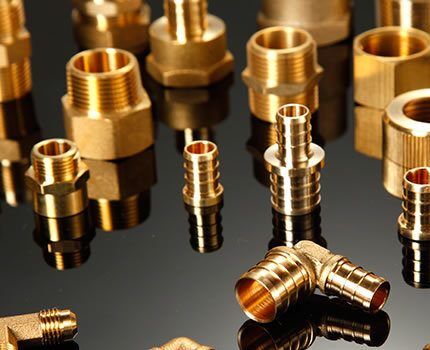
Today there are three methods used connecting radiators: side, diagonal and bottom. The first option, in turn, is divided into one-sided and diagonal. Also, sometimes experts prefer the saddle method.
Which way is better? When installing a heating system in a newly built cottage, the ideal solution would be the bottom connection method. It allows you to install pipes into the floor, hiding them under the screed.This will save precious square meters, and also make the interior of the room more harmonious and neat.
Checking and configuring the system
After all heating equipment has been connected, you should make sure that the work done is correct. To do this, the system is filled with coolant, after which you need to monitor it and check for leaks.
Then the boiler starts. Heating the liquid will allow you to finally verify that the circuit has been assembled correctly and that there are no violations.
If a mistake was nevertheless made and a leak was discovered somewhere, then for this you need:
- drain the coolant;
- correct the defect;
- check again.
The final stage is sealing the grooves where the pipes were laid. If the installation was carried out on the floor, then the best solution is a screed. When the pipeline is installed on a wall, putty or plaster is used. Next, you can do finishing work.
Conclusions and useful video on the topic
Video #1. Heating a private house with an area of 300 m2:
Video #2. Heating a large house that does not have a gas pipeline:
Video #3. Subtleties of heating arrangement in a private house with an area of 150 m2:
Design, selection and installation of a cottage heating system are processes that require due attention and a responsible attitude. If you have decided to do everything yourself, you will have to plunge headlong into the work and closely monitor all the details.
But even when the work was entrusted to professionals, you will have to control the entire process.Remember that only in this case can you organize a high-quality heating system that will make a private home truly warm, cozy and, of course, safe.
Would you like to tell us about the heating scheme that you preferred for furnishing your own home? Do you have useful information that is worth sharing with site visitors? Please write comments in the block below, ask questions, post photos on the topic of the article.




I completely agree that the best option for heating a cottage house would be a gas boiler. But the point here is not so much that it can be more expensive than other heating systems, in terms of its primary cost, as the fact that some may be scared that such a boiler processes gas. Many people have the association that gas means it will explode. Fundamentally wrong, especially for modern systems operating on a gas energy source. There are so many built-in adjustment and protection systems that now modern gas boilers are completely safe. And in addition to high efficiency compared to other heating devices, a gas boiler is also extremely economical to operate!